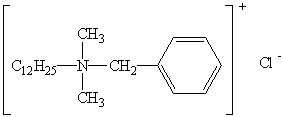Exploring the Applications and Safety of Chloro Methyl Isothiazolinone in Various Industries
Chloro Methyl Isothiazolinone Understanding Its Uses, Benefits, and Safety Concerns
Chloro Methyl Isothiazolinone (CMI) is a biocide and preservative commonly used in a variety of industrial and consumer products, particularly in personal care items, household cleaners, and paint formulations. It functions as a potent antimicrobial agent, preventing the growth of bacteria, fungi, and algae in formulations where water can promote microbial growth. As a member of the isothiazolinone family, CMI is often found in combination with its counterpart, Methylisothiazolinone (MIT), enhancing its effectiveness and broadening its antimicrobial spectrum.
Chloro Methyl Isothiazolinone Understanding Its Uses, Benefits, and Safety Concerns
Despite its effectiveness, the use of CMI has raised significant safety concerns, leading to widespread discussions regarding its potential health impacts. Some individuals may develop allergic reactions, particularly with prolonged exposure. The cosmetic industry has taken note of these concerns. In recent years, regulatory agencies have scrutinized the concentration levels of CMI in personal care products. In Europe, for instance, the European Union Cosmetics Regulation has imposed strict limits on the allowable concentration of CMI and isothiazolinones, particularly due to their association with skin sensitization reactions.
chloro methyl isothiazolinone

Allergic contact dermatitis is one of the primary concerns associated with CMI exposure. Symptoms can range from mild irritation to severe allergic reactions. The prevalence of these dermatological issues has led to initiatives advocating for the reduction or complete phase-out of CMI in consumer products, especially those meant for leave-on use, such as lotions and creams. It’s important for consumers to check ingredient labels and be informed about product formulations, as awareness is key in minimizing potential exposure to allergens.
The environmental impact of CMI is another aspect warranting attention. As a biocide, there are concerns about its persistence in the environment and potential effects on aquatic ecosystems. Research has indicated that isothiazolinones can be toxic to fish and other marine organisms. Consequently, regulatory bodies are exploring the need for stricter regulations governing the release and usage of CMI in industrial applications, particularly where runoff may enter waterways.
In response to safety and environmental concerns, many manufacturers are reformulating their products to include alternatives to CMI and MIT. This trend reflects a growing consumer preference for products perceived as safer and more environmentally friendly. Biobased preservatives and natural antimicrobial agents are gaining popularity as alternatives that can provide similar protective benefits without the associated risks tied to synthetic chemicals.
In conclusion, Chloro Methyl Isothiazolinone is a widely used preservative with proven efficacy in preventing microbial growth. While it contributes to product safety and longevity, concerns surrounding allergenicity and environmental impact have prompted increased scrutiny and regulatory action. As the industry shifts towards safer and more sustainable alternatives, both consumers and manufacturers play a crucial role in shaping the future of product formulations. Understanding these dynamics is essential for making informed choices regarding the products we use daily.
-
Pbtc Scale InhibitorPBTC: A Scale Protector for Industrial Water TreatmentNewsAug.05,2025
-
Organic Phosphonate: An Efficient Defender in the Field of Scale InhibitionNewsAug.05,2025
-
Hydrolyzed Polymaleic Anhydride: Green Pioneer in Scale Inhibition FieldNewsAug.05,2025
-
PAPEMP Polyamino Polyether Methylene Phosphonic Acid For SaleNewsAug.05,2025
-
Flocculant Water Treatment: A Pioneer in Purification in the Field of Water TreatmentNewsAug.05,2025
-
Benzyl Isothiazolinone: An Efficient and Broad-Spectrum Antibacterial Protective GuardNewsAug.05,2025





